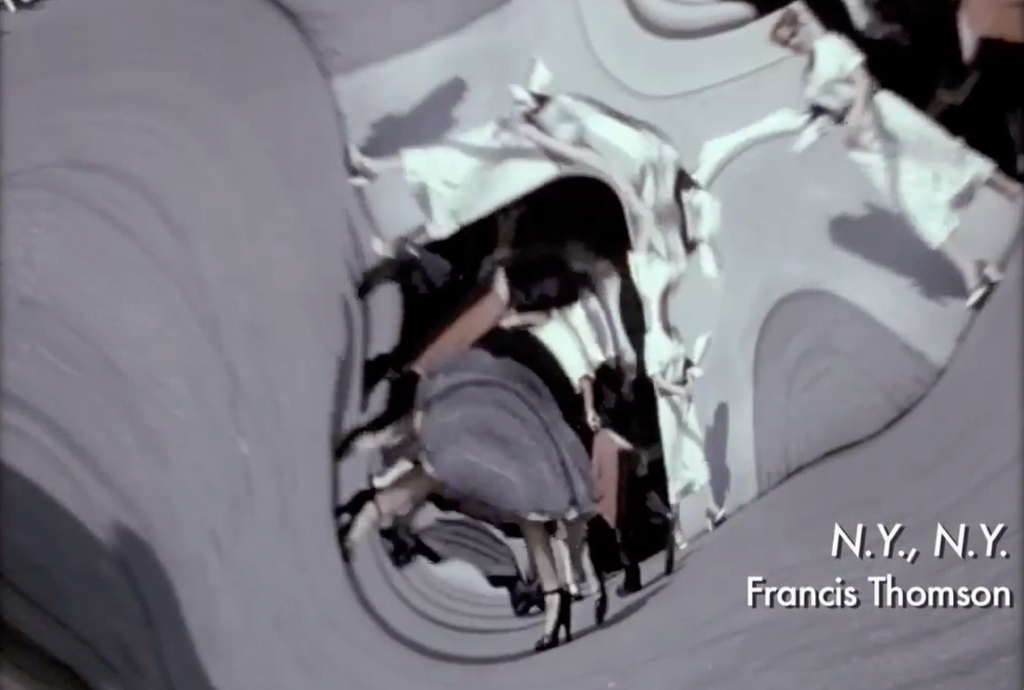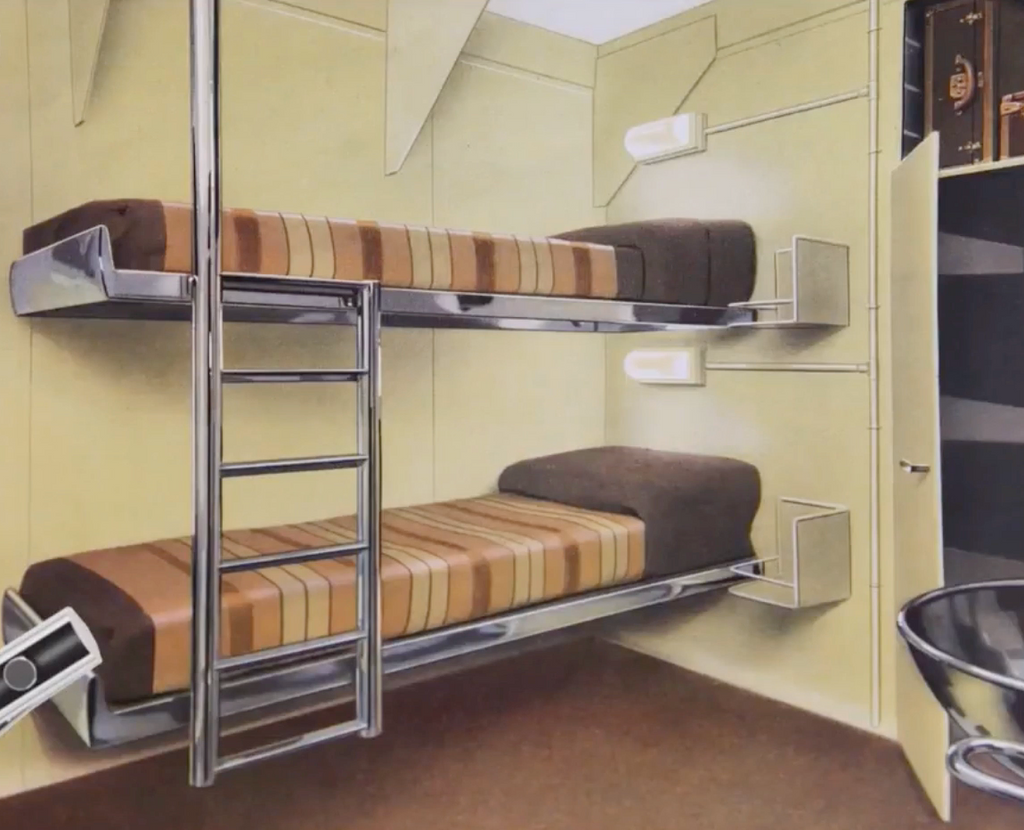Eileen Gray – the renowned Anglo-Irish designer, artist and self-taught architect was born in Wexford, Ireland in 1878.
Gray spent most of her life in France, but she remained proudly Irish and returned to this country on several occasions. She was keen in her later years, for instance, to have her carpets made in Ireland.
When she died in Paris in 1976 at the age of 98, only three people attended her funeral. Today she’s acknowledged as an important voice in the creation of modernism and one of the most important designers of the 20th century.
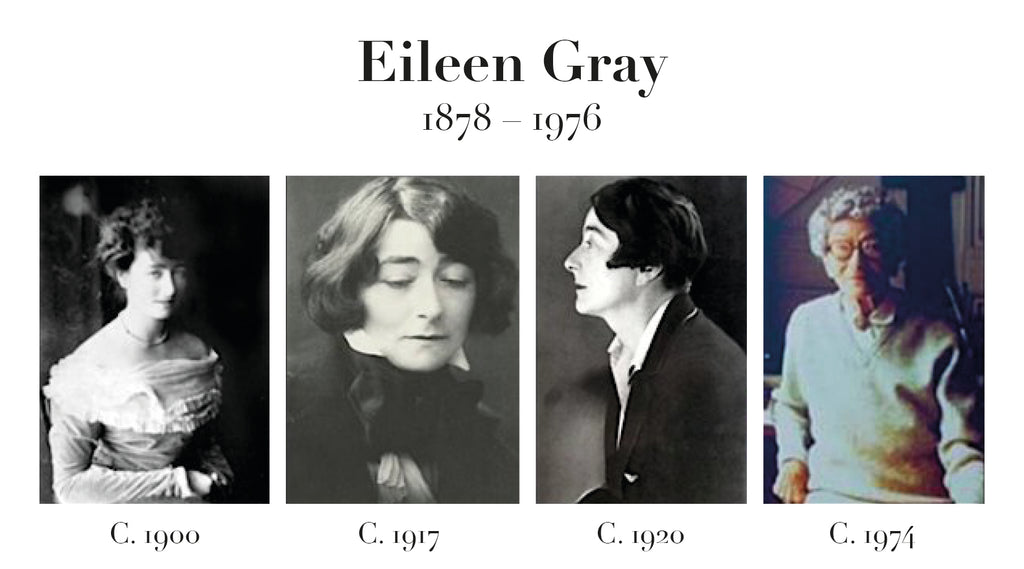
E.1027 - »Maison en bord de Mer«
Architects are familiar with E.1027, a house that Eileen Gray designed and furnished for herself in Roquebrune in the south of France near Monaco. The house has become an icon of modernist architecture. She lived in the house from 1929 to 1932 with her lover Jean Badovici who participated in conversations about the design of this building as well.
Movement is an essential element of the house, which lies between train tracks and the sea. Views, sounds, air, light, furniture and residents - everything circulates between the walls, windows and doors of the villa.
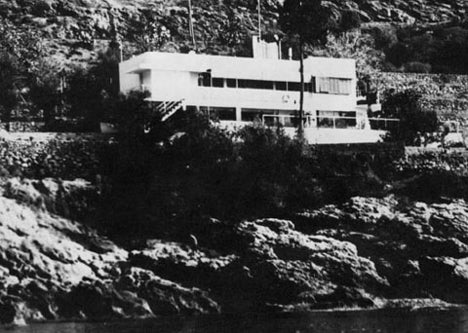
The story of E.1027 has a strange chapter that involves Le Corbusier.
After Eileen Gray moved out of the E.1027 in 1932, she left it to her lover Jean Badovici with it’s interior. She continued to visit, but she didn’t live there. She made a house for herself. And at that point Le Corbusier and his wife started spending many more weekends at the house, because he was a good friend of Badovici. He had been very envious of this house and probably both angry and confused that a woman with no architectural training had managed to realize something so completely in line with what he was driving to do with his own work.
While staying at the house on the weekends he began a series of paintings of all the walls in and around the house. He painted frescoes onto the plaster walls - generally while nude. Most of them are erotic in nature and they’re abstract naked figures. Gray was horrified by this. It was more a desecration than it was a decoration.
The strange twist was that the murals ended up saving the house, because of Gray’s anonymity later in her life. And thanks to Corbusier’s fame the house became attributed to him and not torn down in a time when this sort of architecture was not really valued.
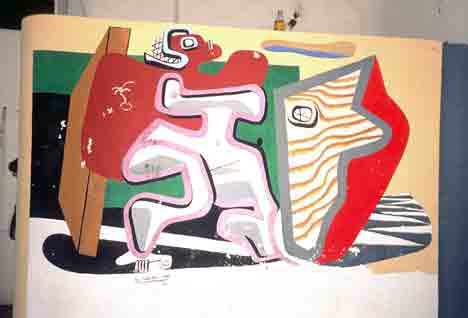
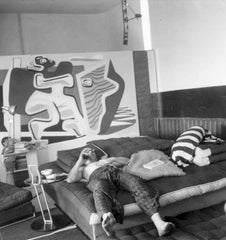
When John Badovici died in 1956 the house went up for sale and Le Corbusier tried to purchase the house. He was unsuccessful with his bid and he lived right next door in a small rustic wood house that he had built. In 1957 while swimming below the house in the Mediterranean he had a heart attack and drowned. It’s an operatic sort of story:
Famous architect enraged and jealous about success of female non architect. Destroys house with murals and winds up drowning with the house being the last thing he sees.
In 2014 Mary McGuckian and Marco Orsini made a movie called »Gray matters« investigating the life of Eileen Gray. And in 2015 they produced a new movie called »the price of desire« which investigates the relationship between Eileen Gray and John Badovici, Le Corbusier and the house E.1027. Part of that remarkable accomplishment has been the complete restoration of the house which has fallen into complete disrepair and is now restored to it’s original magnificent condition.
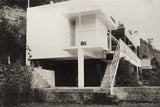
Eileen Gray photographed the house E1027 in Roquebrune-Cap-Martin with a professional camera. Gray was friends with the niece of the inventor of the camera and thus received the knowledge of the „photographie métrique de Alphonse Bertillon,“ which was mainly used in crime research, as the architect Christian Müller understood by letters.
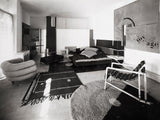
Little has a firm place, but everything has a clear order. The main room of E 1027 with the Bidendum and Transat chairs in the foreground. On the right side her map collage with the inscription „invitation au voyage“.
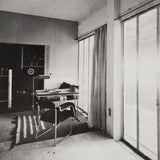
View to the passage into the bedroom. The dining table with the cork cushions dampened the clatter of dishes.
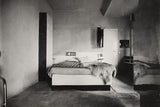
Everything in the bedroom is custom made. The gloss of the aluminum cladding, which also exists in the bathroom, was only moderately resistant to the sea air.
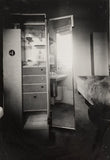 The folding and sliding furniture has been specially designed for this location and Eileen Gray uses these photographs to stage the play of light and the mobility of these.
The folding and sliding furniture has been specially designed for this location and Eileen Gray uses these photographs to stage the play of light and the mobility of these.

Comfort and hygiene with the most modern means and traditional allusions. On the bidet in the bathroom, behind the bedroom of Eileen Gray, she placed an edition of then-modern orange foam rubber.
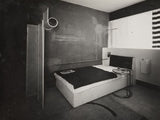
Glance into the guest room, with Eileen Gray‘s most well-known piece of furniture. The table E.1027, which is now available in the series. Thanks to his discharge, he can be pushed to the bed.
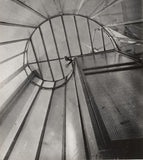
The spiral staircase is covered by an elliptical spiral glass dome, which could be an architectural sensation in itself.

For the publication in Jean Badovici‘s avant-garde journal „L‘architecture vivante“ the photograph appeared colored, with color accents on the textiles and carpets that Eileen Gray also sold in her Parisian gallery „Jean Desert“.
The name: E.1027
The name of the house, E.1027, is a code of Eileen Gray and Jean Badovici, ‚E‘ standing for Eileen, ‚10‘ Jean, ‚2‘ Badovici 8 the tenth letter of the alphabet), ‚7‘ Gray. The encoded name was Eileen Gray‘s way of showing their relationship as lovers at the time when built. Eileen Gray‘s name has 10 letters, as does Jean Desert (her gallery‘s name is in Paris), brownswood - Eileen‘s parents‘ house and Roquebrune, where Villa E.1027 stands. Also, the cross sum of 1027 gives 10. Graphically, the number 10 connects the curve with the line.
Asymmetry
At the beginning of the 20s, the magazine De Stijl wrote that the new architecture had destroyed symmetry. Eileen Gray felt connected to the Dutch architects, who paid tribute to her in the art magazine Bwendingen.
Part of her furniture recognizes this asymmetry.
The chair »Non Conformist« with only one armrest
Eileen Gray comments her work in a typically understated manner in a very pragmatic way:
„An armrest has been omitted to leave the body more freedom in movement and to allow it to bend forward or to turn to the other side unrestricted.“
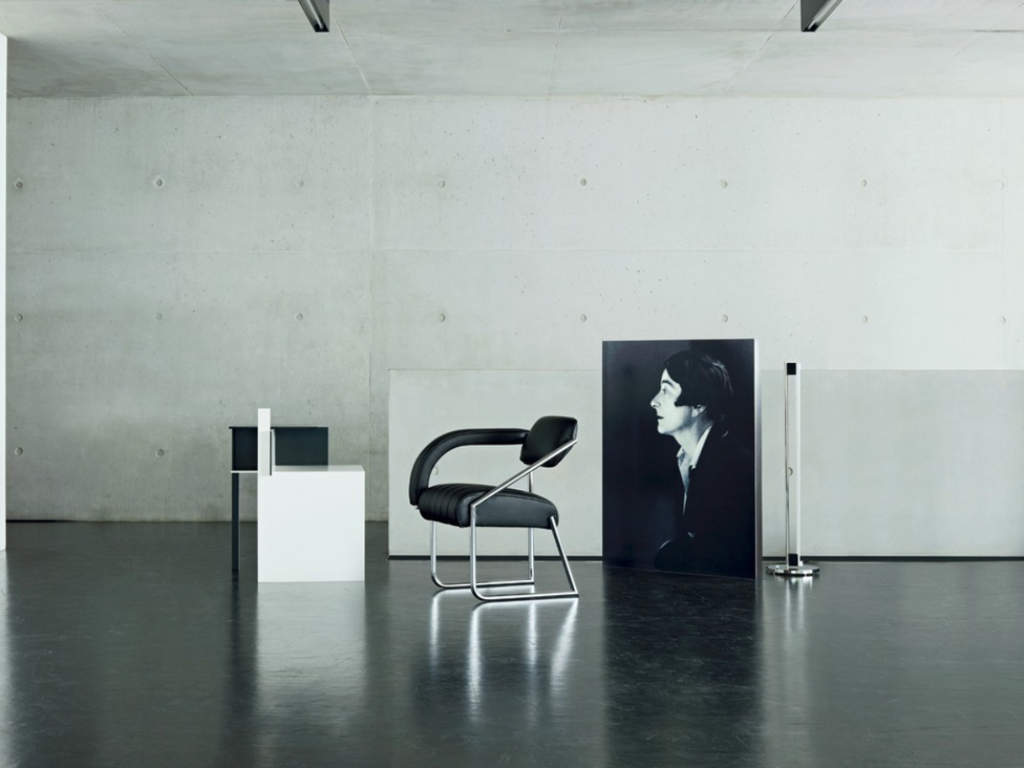
Many furnitures resist the rule of equilibrium. In the lack of symmetry Eileen Gray sees a rejection of the norms. She also lets herself be photographed only in profile and thus refuses the frontal symmetry.
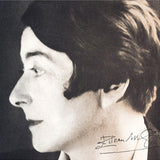
Adjustable Table E 1027
Adjustable table, designed by Gray for her villa in the south of France, is thought to be inspired by Gray’s sister who enjoyed breakfast in bed.
The table was designed between 1926 and 29. It is almost one hundred years old, but its spirit and its lightness still influences designers of today. The table never went into mass production during Eileen‘s lifetime.
E 1027 is asymmetrical, but the flowing gradient of the chrome ensures a continuous movement. There are no breaks or angles.
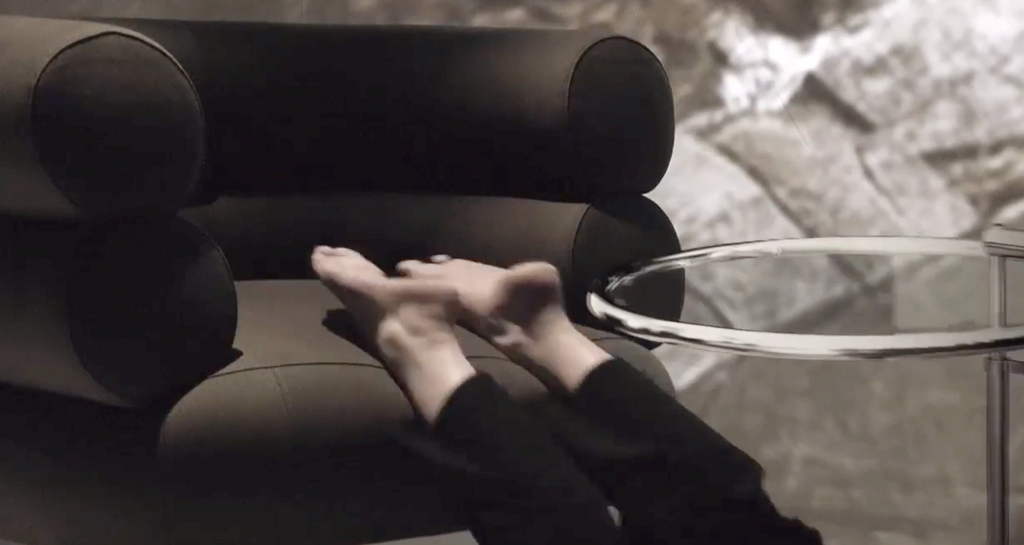
Chrome
Chrome protects the surface and ensures a uniform and shiny effect. Chrome is becoming increasingly popular with designers in the 1920‘s because of its hardness. Chrome stands for aerodynamics, technology and modernity and even makes its way into the cabins of the ocean liner.
Even if he may initially seem pretentious and superficial, a chrome-plated object reflects the private and the society, as if in a distorting mirror.
